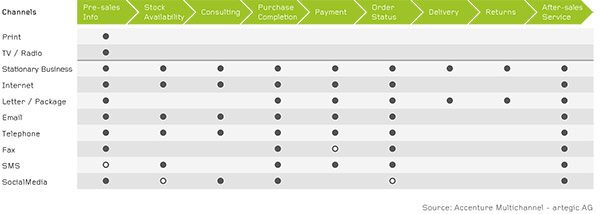The times of traditional, linear attributes/funnel models in marketing are over. The customer journey in the digital age is more complex, mostly non-linear and leads along a number of touchpoints, including those which are not owned by the company and therefore cannot be directly controlled. A current study by Econsultancy and ResponseTap shows how important the understanding of the customer journey is. 86% of companies see increased profitability and higher turnovers as essential benefits. 83% say that understanding the customer journey helps to identify pain points in order to improve the customer experience. However, there is still a lot to be done. Only 12% of companies have an advanced understanding of their customer journey.
Companies and users today engage in a continuous dialogue throughout the customer lifecycle. During this dialogue, the user will be in contact with the company via a number of touchpoints (e.g. email, website or call centre) in different channels and contexts of use. Among these are touchpoints which are not owned by the company where users exchange their views on companies, brands and products, e.g. blogs, communities or social media). Each of these touchpoints influences the user during his customer journey or may even be the starting point for a new customer journey. Users jump between touchpoints and do not always follow the path provided by the company.
Create an Understanding of the Customer Journey
In order to create an understanding of the customer journey, a number of questions need to be answered:
- At which touchpoints does the target group get into contact with my company?
- In which contexts does this contact take place? Mobile? At specific times? Depending on the weather?
- How often are the touchpoints frequented? Is the facebook service, for example, used or are support queries only received in the call centre?
- In which phases of the customer lifecycle are touchpoints used? Do prospective customers show an interest in my company via SEO/SEA? How many purchases happen through newsletters?
- Which touchpoints are owned by the company? Do users make up their opinion about the company via third party blogs or via the company’s own channels?
- Are there touchpoints which are not yet offered by my company but could be used in the future? Would it make sense to create my own community?
- Do users from different user segments use different touchpoints?
- How do users move from one touchpoint to another?
There are several options to answer these questions. Users can be questioned directly. At company-own touchpoints, user behaviour can be tracked. You can track, e.g. which paths the user takes from touchpoint to touchpoint and what the interdependencies look like. At third party touchpoints, either manual or with the appropriate tools even automated monitoring, can provide information about the user behaviour.
Once the questions have been answered, you should create a customer journey map. A customer journey map graphically demonstrates the user’s paths. It is important at this point, to include the after sales, e.g. in the form of transaction communication or potential support cases. A customer journeymap in a simplified way might look like this:
Single Customer View for Consistent User Guidance
Whether tracking, monitoring or surveys, the basis for understanding the customer journey is data. This is confirmed by 98% of companies in the above mentioned study by Econsultancy and ResponseTap. To optimise the individual touchpoints and guide users consistently along the customer journey, it is essential that all touchpoints have access to the same centralised data. This is about establishing a single customer view.
One of the biggest challenges in the context of tracking is not to collect data anonymously but to assign it to specific users. The problem is that at many touchpoints, users are anonymous despite procedures such as digital fingerprinting. It is therefore important to guide users to touchpoints where their anonymity is removed. Email marketing assumes an elementary role here.
